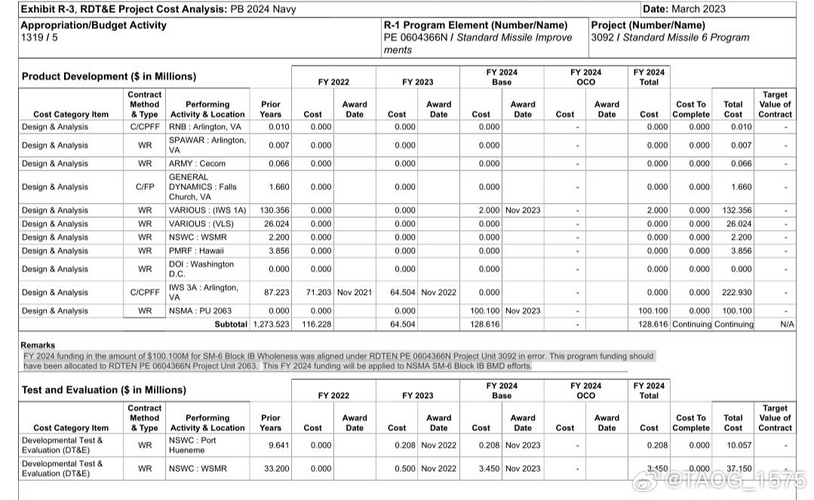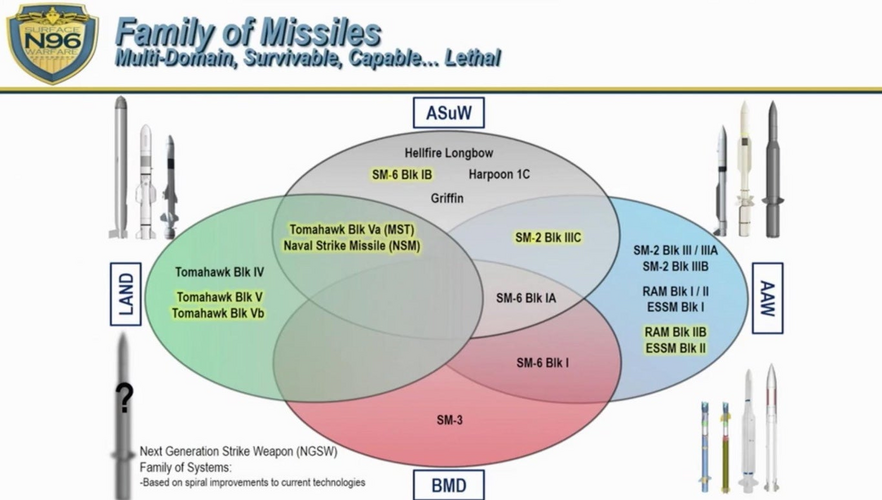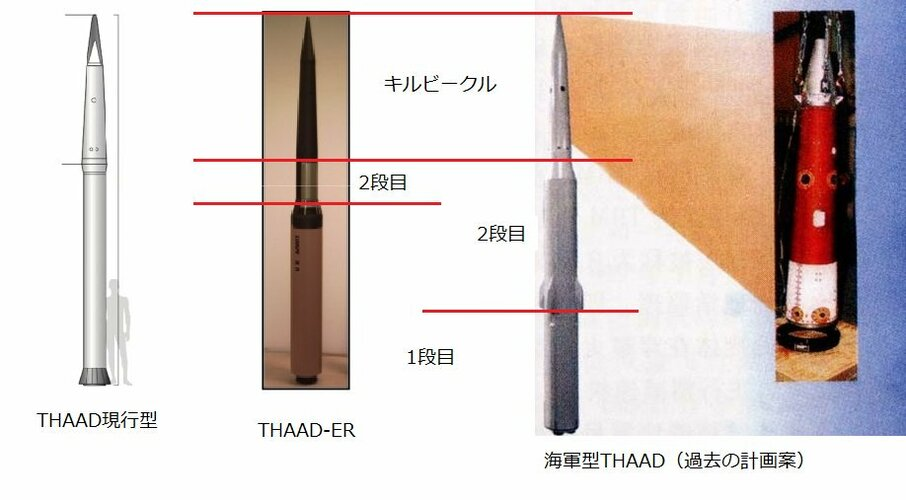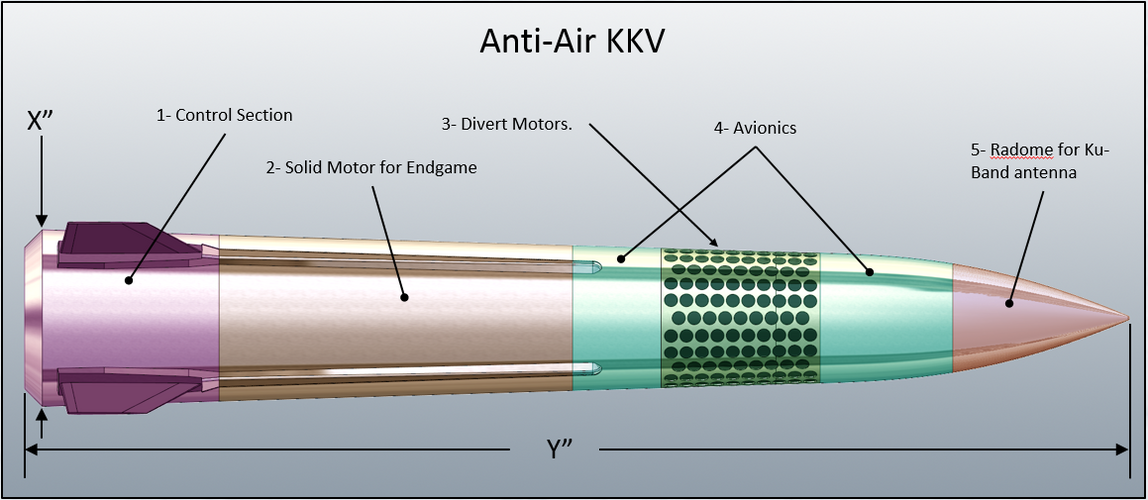You are using an out of date browser. It may not display this or other websites correctly.
You should upgrade or use an alternative browser.
You should upgrade or use an alternative browser.
LGM-35A Sentinel - Ground-Based Strategic Deterrent (GBSD) program
- Thread starter RyanC
- Start date
Scott Kenny
ACCESS: USAP
- Joined
- 15 May 2023
- Messages
- 11,599
- Reaction score
- 14,276
Now get those missiles in front of something moving at about 3km/sec.Fairly sure SM-6 and SM-3 can manage just a tad more than 5-7nm.
Makes for a very small effective engagement footprint.
Scott Kenny
ACCESS: USAP
- Joined
- 15 May 2023
- Messages
- 11,599
- Reaction score
- 14,276
I'd be very leery of sending a ballistic missile at US soil.That is my point: submarines are not going to be reloading often enough for the tomahawk inventory to really matter. Realistically, only Hawaii is outside PRC ballistic missile range, even that assumes they are unwilling to use conventional ICBMs for an attack on a US state.
If you're really lucky, the US won't send a pile of Minutemen and Tridents your way before your conventional ballistic missile lands. Or at least the Minutemen. It takes long enough to make a Trident ready (between ship and missiles) that you might luck out and not get any Tridents launched before your conventional attack landed. But the Minutemen are held ready to fire as I understand it (hence the name).
Based on that one suggested CG loadout I found online, it would not take much of an AShBM strike to run even a CG out of SM3s and -6s.The question to my mind is 1). do USN defensive systems have the capability to absorb the number of ballistic missiles the PLA-RF can fire into various range bands and 2). does the USN have the magazine capacity to absorb repeat strikes? The first one is quite unclear; the second one seems to be likely no. If the USN surface fleet can remain on station for extended periods, even at a distance (let us say 1000 miles off shore), then I would be pleasantly surprised.
You'd still have to be very close to the ground track of the missiles to successfully engage any hypersonics. Regular ballistics are somewhat easier to engage, oddly.Presumably at least one of the defenders would be located down the threat axis between the carrier and the opposition coast, even if it was not adjacent to the carrier.
Forest Green
ACCESS: Above Top Secret
- Joined
- 11 June 2019
- Messages
- 9,496
- Reaction score
- 17,358
MaRVs and supersonic missiles are bread and butter for Aegis. HGVs would be defended by jamming the satellites being used to provide guidance updates mid-course.... as well as generally pounding the living crap out of any launch vehicles or production facilities for the aforementioned, plus any supporting businesses.It's hard to imagine that the CSG, with its limited number of escorts, could counter a multi-threat axis attack by hypergliders, supersonic missiles, and MaRVs, but a ersatz FCTF should be able to survive. RIP forward deployed CSG I guess unless the PRC is incompetent.
SM-6 IB seems to have a BMD role, which has testing funded for FY2024.This is what SM-3 HAWK was supposed to do tbf. It would have been a new interceptor because E2I yucky or something idk.



There was this from somewhere:

I refer back to post #1,503, we were discussing AShBMs with MaRVs not super-duper HGVs, of which there's zero record of one ever engaging a ship... even in a sanitised testing environment. In fact, there's little evidence to even suggest a HGV would have the accuracy to engage a ship, so far they've been nuke orientated delivery devices.Now get those missiles in front of something moving at about 3km/sec.
Makes for a very small effective engagement footprint.
I suspect the real question is if the ESSMs can intercept an AShBM. The DDGs will probably do fine, the question is whether the carrier and everything else without Aegis can deal with those missiles.
Last edited:
Scott Kenny
ACCESS: USAP
- Joined
- 15 May 2023
- Messages
- 11,599
- Reaction score
- 14,276
Even an AShBM is moving at 3km/sec or more when it re-enters the atmosphere. (assuming it has an exo-atmospheric stage to begin with). And now it's too low for SM3s. So your SM6s need to be in a position where they can get in front of that MaRV, very close to the ground track.I refer back to post #1,503, we were discussing AShBMs with MaRVs not super-duper HGVs, of which there's zero record of one ever engaging a ship... even in a sanitised testing environment. In fact, there's little evidence to even suggest a HGV would have the accuracy to engage a ship, so far they've been nuke orientated delivery devices.
As everyone shooting at SR71s has demonstrated, hitting a maneuvering high speed target at Mach 3 and 75000ft is not easy. And the Blackbirds were only capable of like 1.5gees at that speed.
Last edited:
Forest Green
ACCESS: Above Top Secret
- Joined
- 11 June 2019
- Messages
- 9,496
- Reaction score
- 17,358
Why on earth would an SM-3 wait until it re-enters the atmosphere? On SM-6s? Any evidence of how close? The peak range of SM-6s is near 500km, so even against a BM it should be at least a tenth of that. I'm also sure the people who decide escort distances have already sucked these eggs.Even an AShBM is moving at 3km/sec or more when it re-enters the atmosphere. (assuming it has an exo-atmospheric stage to begin with). And now it's too low for SM3s. So your SM6s need to be in a position where they can get in front of that MaRV, very close to the ground track.
An SA-2 over the Korean DMZ would have managed it if the proximity fuse was a little better. The pilot saw it fly right past his cockpit. BMs will be seen coming from much further away.As everyone shooting at SR71s has demonstrated, hitting a maneuvering high speed target at Mach 3 and 75000ft is not easy. And the Blackbirds were only capable of like 1.5gees at that speed.
An SA-2 over the Korean DMZ would have managed it if the proximity fuse was a little better.
I strongly suspect the SR-71's ECM package was able to successfully spoof the SA-2's proximity-fuse also keep in mind that at the speeds and altitudes the Blackbird was flying the SA-2 had severe kinematic limitations.
Forest Green
ACCESS: Above Top Secret
- Joined
- 11 June 2019
- Messages
- 9,496
- Reaction score
- 17,358
It was a head-on pass so kinematic limitations were not a factor, the missile exploded 100m after passing the aircraft. It was a very close call and led to the US moving a lot of fighter aircraft into the area. It was a very old missile with a fuse designed for intercepts up to Mach 2, the fuse was just too slow for a closing speed of Mach 6+. And the aircraft was flying parallel to the ground at Mach 3-2-3.5 at 80-90kft, so quite a large gap between the ground track.I strongly suspect the SR-71's ECM package was able to successfully spoof the SA-2's proximity-fuse also keep in mind that at the speeds and altitudes the Blackbird was flying the SA-2 had severe kinematic limitations.
Scott Kenny
ACCESS: USAP
- Joined
- 15 May 2023
- Messages
- 11,599
- Reaction score
- 14,276
An SM3 shouldn't, can't, wait, but what trajectory are the AShBMs flying? If I were China, I'd have set up those missiles strictly for depressed trajectory shots that never leave the atmosphere.Why on earth would an SM-3 wait until it re-enters the atmosphere? On SM-6s?
Now the SM6s need to hit a hypersonic target at some 100k+ ft altitude.
Cross track, not max range.Any evidence of how close? The peak range of SM-6s is near 500km, so even against a BM it should be at least a tenth of that.
One of the defensive papers I snagged on this forum was saying that versus hypersonics the cross range for defensive missiles is tiny. 10km or so versus a target at 100kft and Mach 9.
I would hope so, but I'm not convinced they have.I'm also sure the people who decide escort distances have already sucked these eggs.
- Joined
- 21 April 2009
- Messages
- 13,751
- Reaction score
- 7,676

Congress should save the Sentinel ICBM—its true value is more than simply its cost
The value of the new intercontinental ballistic missile program should be measured over its full lifetime and not just by its current price tag.
Dilandu
I'm dissatisfied, which means, I exist.
Assuming that proximity fuze would not be switched off and command detonation would not be used instead.I strongly suspect the SR-71's ECM package was able to successfully spoof the SA-2's proximity-fuse also keep in mind that at the speeds and altitudes the Blackbird was flying the SA-2 had severe kinematic limitations.
Scott Kenny
ACCESS: USAP
- Joined
- 15 May 2023
- Messages
- 11,599
- Reaction score
- 14,276
Assuming that proximity fuze would not be switched off and command detonation would not be used instead.
Disregard, S-75 command detonation is not a manual signal.
Last edited:
Assuming that proximity fuze would not be switched off and command detonation would not be used instead.
Command detonation would very likely be more easily spoofed than a proximity-fuse.
Forest Green
ACCESS: Above Top Secret
- Joined
- 11 June 2019
- Messages
- 9,496
- Reaction score
- 17,358
Depressed trajectory shots still leave the atmosphere for MRBMs/IRBMs and they also result is slower terminal speeds, which may not even be hypersonic anymore. Other options would be shooting down the satellites used for targeting the ships with SM-3.An SM3 shouldn't, can't, wait, but what trajectory are the AShBMs flying? If I were China, I'd have set up those missiles strictly for depressed trajectory shots that never leave the atmosphere.
Now the SM6s need to hit a hypersonic target at some 100k+ ft altitude.
Where? Which version of SM-6?Cross track, not max range.
One of the defensive papers I snagged on this forum was saying that versus hypersonics the cross range for defensive missiles is tiny. 10km or so versus a target at 100kft and Mach 9.
Pretty sure they will have, since the sole purpose of them being there is to defend the carrier.I would hope so, but I'm not convinced they have.
Last edited:
Dilandu
I'm dissatisfied, which means, I exist.
Actually no, because receiver antenna is pointed away from target and jammer did not know the detonation command. It would probably be simpler for jammer to decoy the range lock of tracking radar (so the detonation command would be sent at wrong distance)Command detonation would very likely be more easily spoofed than a proximity-fuse.
Dilandu
I'm dissatisfied, which means, I exist.
Depend soley on how good your ranging radar is.Command detonation against a Mach 6 closing speed is a poor choice.
Dilandu
I'm dissatisfied, which means, I exist.
Of course assuming that targeting wouldn't be done with the help of Starlink-sized low orbit constellation.Other options would be shooting down the satellites used for targeting the ships with SM-3.
Actually no, because receiver antenna is pointed away from target and jammer did not know the detonation command. It would probably be simpler for jammer to decoy the range lock of tracking radar (so the detonation command would be sent at wrong distance)
I wasn't talking about directly jamming the command link itself (Difficult but still possible) but fooling the guidance computer on the ground into ordering an erroneous detonation command.
- Joined
- 3 June 2011
- Messages
- 18,334
- Reaction score
- 12,225
That's not real; it's just a doodle of mine. Nose of this thing:There was this from somewhere:
View attachment 729584
Forest Green
ACCESS: Above Top Secret
- Joined
- 11 June 2019
- Messages
- 9,496
- Reaction score
- 17,358
Only the US has this at the moment, but I imagine space assets could deal with such if need be. There's also targeting of launchers, stockpiles and production factories as a primary option, satellite killing/jamming second, interceptors third. Loosely equivalent to cutting the trunk, poisoning the tree or trimming the branches.Of course assuming that targeting wouldn't be done with the help of Starlink-sized low orbit constellation.
Only the US has this at the moment, but I imagine space assets could deal with such if need be. There's also targeting of launchers, stockpiles and production factories as a primary option, satellite killing/jamming second, interceptors third. Loosely equivalent to cutting the trunk, poisoning the tree or trimming the branches.
The IS does not have such a constellation yet. The first launch was literally yesterday, NROL-146. China currently has something like 300-400 remote sensing satellites, with about a hundred launched in both 2022 and 2024, roughly half their total launches for those years. So shooting down satellites is not a viable option.
Dilandu
I'm dissatisfied, which means, I exist.
Of course you realize, that the same would be done with US space accets?Only the US has this at the moment, but I imagine space assets could deal with such if need be. There's also targeting of launchers, stockpiles and production factories as a primary option, satellite killing/jamming second, interceptors third. Loosely equivalent to cutting the trunk, poisoning the tree or trimming the branches.
Of course you realize, that the same would be done with US space accets?
It seems unlikely China has the means to bomb US production and launch facilities, though I consider it equally unlikely the U.S. would take such action anyway for a raft of practical and political reasons.
Both sides have rather prolific constellations, with the U.S. about to drastically increase its footprint. I doubt either side has a large enough ASAT capability to neutralize the other’s assets on a large scale, though perhaps specific capabilities might be neutralized for windows of time and space.
Dilandu
I'm dissatisfied, which means, I exist.
Well, it's kinda obvious that China could create such means with relative ease, if decided to do it. While USA have more capabilities to attack China, the American homeland defenses are much less advanced than Chinese, so China would need much less missiles launched to strike US industrial objects than US would need to strike Chinese (seriously, how many of American cities have any kind of constant air defense?)It seems unlikely China has the means to bomb US production and launch facilities, though I consider it equally unlikely the U.S. would take such action anyway for a raft of practical and political reasons.
Forest Green
ACCESS: Above Top Secret
- Joined
- 11 June 2019
- Messages
- 9,496
- Reaction score
- 17,358
Are they as good at intercepting satellites as ATACMS missiles?Of course you realize, that the same would be done with US space accets?
Last edited:
Dilandu
I'm dissatisfied, which means, I exist.
There are differences between satellite on predictable orbit and ballistic missiles on short trajectory.Are they as good at intercepting satellites as ATACMS missiles?
Considering PATRIOT less then stellar record in dealing with ballistics, are you sure that you want to turn the discussion in this direction?Are they as good at intercepting satellites as ATACMS missiles?
Last edited by a moderator:
Well, it's kinda obvious that China could create such means with relative ease, if decided to do it. While USA have more capabilities to attack China, the American homeland defenses are much less advanced than Chinese, so China would need much less missiles launched to strike US industrial objects than US would need to strike Chinese (seriously, how many of American cities have any kind of constant air defense?)
Fair enough, the PRC could strike the U.S. with conventional ICBM type weapons. It would however be an expensive way to hit targets, and potentially risky.
Dilandu
I'm dissatisfied, which means, I exist.
Or to deploy cruise missiles from platforms close to US coastline. Granted, China doesn't seems to be interested in such delivery systems now. But they already experiment with ultra-long-range drones, capable of crossing the Pacific; an evolved design of such drone could be used as relatively cheap, mass-produced trans-Pacific carrier for standoff cruise missiles.Fair enough, the PRC could strike the U.S. with conventional ICBM type weapons. It would however be an expensive way to hit targets, and potentially risky.
Or to deploy cruise missiles from platforms close to US coastline. Granted, China doesn't seems to be interested in such delivery systems now. But they already experiment with ultra-long-range drones, capable of crossing the Pacific; an evolved design of such drone could be used as relatively cheap, mass-produced trans-Pacific carrier for standoff cruise missiles.
there are HALE drones that perhaps have that range, but that seems like an expensive and vulnerable mechanism compared to ICBMs. Cruise missiles could be mounted on civilian ships, but it seems unlikely to be a mechanism for sustained bombardment.
Scott Kenny
ACCESS: USAP
- Joined
- 15 May 2023
- Messages
- 11,599
- Reaction score
- 14,276
Depend soley on how good your ranging radar is.
Edit: Disregard, the command detonation is not a manual command.
Last edited:
Dilandu
I'm dissatisfied, which means, I exist.
The ICBM are rather costly to use as conventional weapon system. Not to mention that any meaningful salvo could easily be mistaken for nuclear attack - with consequences.there are HALE drones that perhaps have that range, but that seems like an expensive and vulnerable mechanism compared to ICBMs. Cruise missiles could be mounted on civilian ships, but it seems unlikely to be a mechanism for sustained bombardment.
Erm, the detonation command on S-75 is sent by automatic circuit. I'm not sure it even have the manual detonation mode.And how good your operators reflexes are, when you're talking about a 2km/s closing speed... 0.1 seconds off on the timing and your missile blows up 200m away.
Scott Kenny
ACCESS: USAP
- Joined
- 15 May 2023
- Messages
- 11,599
- Reaction score
- 14,276
Exactly!The ICBM are rather costly to use as conventional weapon system. Not to mention that any meaningful salvo could easily be mistaken for nuclear attack - with consequences.
It's honestly my biggest issue with Conventional Prompt Strike missiles in general. Or Russian hypergliders, since they're all declared as strategic nukes.
Ah, disregard that last then. Not sure why my brain went to manual detonation when you said "command detonation"...Erm, the detonation command on S-75 is sent by automatic circuit. I'm not sure it even have the manual detonation mode.
Exactly!
It's honestly my biggest issue with Conventional Prompt Strike missiles in general. Or Russian hypergliders, since they're all declared as strategic nukes.
Realistically I think most countries would not engage in a strategic nuclear attack if only a dozen or less missiles were incoming. There would be enough time and infrastructure to launch on impact.
Dilandu
I'm dissatisfied, which means, I exist.
A dozen of heavy ICBM's could carry more than a hundred of warheads. Pretty enough, for example, to hit all Minuteman command bunkers, paralyzing the land-based triade.Realistically I think most countries would not engage in a strategic nuclear attack if only a dozen or less missiles were incoming. There would be enough time and infrastructure to launch on impact.
That's why CPS is conventional only, it flies a significantly different profile than any nuclear tipped US system.Exactly!
It's honestly my biggest issue with Conventional Prompt Strike missiles in general. Or Russian hypergliders, since they're all declared as strategic nukes.
Ah, disregard that last then. Not sure why my brain went to manual detonation when you said "command detonation"...
The Russian HGV is nuke only so no chance of mistakes happening. The problem lies with dual capable systems...
A dozen of heavy ICBM's could carry more than a hundred of warheads. Pretty enough, for example, to hit all Minuteman command bunkers, paralyzing the land-based triade.
Perhaps. But their trajectory likely would be mapped by mid course, and I expect the U.S. response would probably be launch on impact unless it was clear warheads were attacking MM3 sites.
In any case, I do not think either side would destroy production or launch facilities of satellites.
Forest Green
ACCESS: Above Top Secret
- Joined
- 11 June 2019
- Messages
- 9,496
- Reaction score
- 17,358
Could a radar distinguish between a Tomahawk and SLCM-N? AGM-86 and JASSM-ER, or LRSO and JASSM-XR for that matter?That's why CPS is conventional only, it flies a significantly different profile than any nuclear tipped US system.
The Russian HGV is nuke only so no chance of mistakes happening. The problem lies with dual capable systems...
Forest Green
ACCESS: Above Top Secret
- Joined
- 11 June 2019
- Messages
- 9,496
- Reaction score
- 17,358
Production facilities for MRBMs and IRBMs would likely be targeted though, as would air-defence production facilities.Perhaps. But their trajectory likely would be mapped by mid course, and I expect the U.S. response would probably be launch on impact unless it was clear warheads were attacking MM3 sites.
In any case, I do not think either side would destroy production or launch facilities of satellites.
Scott Kenny
ACCESS: USAP
- Joined
- 15 May 2023
- Messages
- 11,599
- Reaction score
- 14,276
Highly unlikely.Could a radar distinguish between a Tomahawk and SLCM-N? AGM-86 and JASSM-ER, or LRSO and JASSM-XR for that matter?
But point taken about CPS type ballistics or hypersonics
Forest Green
ACCESS: Above Top Secret
- Joined
- 11 June 2019
- Messages
- 9,496
- Reaction score
- 17,358
Like maybe a sub-launched CPS vs a Trident D5 on a depressed trajectory, or even a D5 LE on a depressed trajectory with PGRVs at some future point.Highly unlikely.
But point taken about CPS type ballistics or hypersonics
Similar threads
-
-
Flywheels to power laser systems? (Also: ICBM plug blocking systems)
- Started by greenmartian2017
- Replies: 5
-
-
-
